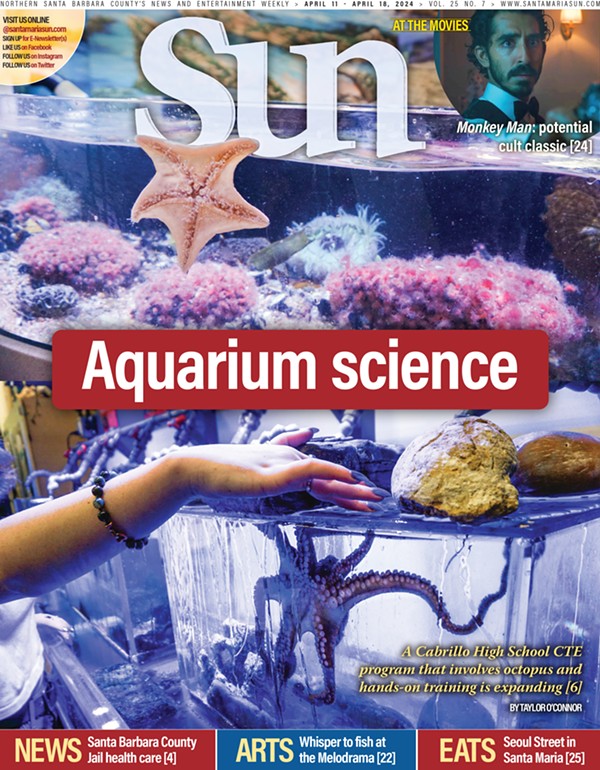My first day of first grade is still vividly etched in my memory—the day I rode my bike to school for the very first time. I grew impatient as my dad reviewed the lessons of my bike safety class. I was just eager to take off. It meant independence; freedom; self-reliance. I was going to power “my own self” for an exhilarating morning ride. I was going to prove that I could pedal those 2-plus miles all by myself (only learning later that my dad followed me by car the entire way). In those days, concerns about health, exercise, and too much screen time were still years in the future. I just knew that it was a grand adventure.
Nowadays, too few children ever have that experience. In the Santa Ynez Valley, outside of Buellton and Solvang, we have few sidewalks or safe, delineated paths for those on foot, bike, or horseback. Despite living in a beautiful rural, small-town area, to get around safely, most of us resort to car, adding to congestion, pollution, and the pitfalls of the sedentary life. This reliance on cars and absence of trails deprives children of a significant rite of passage and the opportunity to be more active and self-sufficient.
A coalition led by local community members is bent on changing this, starting with trails along Refugio Road from the high school north to Samantha Drive. This trail corridor is identified in the Santa Ynez Community Plan, and the idea of restoring it was suggested by local neighbors and parents. Last year, the Board of Supervisors allocated funds for this project. After several public meetings, county officials knocked on doors to inform adjacent residents about the path and discuss how best to clear vegetation and remove encroachments from the public right of way. Public Works staff will soon begin needed preparation work (pruning, retaining walls, curb ramps). On the west will be a formal, stabilized-earth path for walkers and cyclists, and on the east an informal path with wood chips for equestrians eager to get to the river and beyond. For more detail, see sbco.mysocialpinpoint.com/refugiotrail.
On Sept. 27, we plan to celebrate the groundbreaking for a demonstration section of the trail by the high school. It will showcase the material and design for the rest of the path, which will depend on active community engagement to construct. On the first two Saturdays of October (Oct. 1 and Oct. 8) from 9 a.m. to 1 p.m., we will be holding community workdays to complete the first section of the trail—I invite you to join us at these work days. More information is available at the website mentioned above.
Abe Powell, the co-founder and director of the Santa Barbara Bucket Brigade, has been working with us, sharing lessons from highly successful community trail projects elsewhere in the county. One of Bucket Brigade’s central lessons is that when people come together to work on community improvement projects, they form bonds that foster greater community connection and resilience. Research bears him out.
While we all understand the importance of close relationships, only recently have scholars started looking at “the strength of weak ties”—to people we greet on our morning walk, the checker at the grocery store, the kind person who calls about our missing cat. These casual acquaintances are “consequential strangers” who might not seem to matter, but really do. They expand our world, give us a sense of being connected to something bigger, and impart a sense of belonging. As our circles of acquaintances expand and intersect, so does the sense of community cohesion. Studies show that people with more weak-tie interactions than average report feeling happier, more trusting, more connected.
Connectedness translates into greater resilience—the ability to withstand stress. Classic studies of Chicago’s notorious July 1995 heat disaster first illustrated this. One neighborhood, Little Village, with a dense population, a busy main street, and vibrant public spaces had a much lower death rate than another, North Lawndale, characterized by dispersion and decay. Seniors from a different neighborhood, where they met weekly at the local library, fared far better than seniors from a similar neighborhood but without community meeting space and programs. Connected people look out for themselves and for others—the strength of weak ties.
How we design and use public space in our communities can foster or deter these kinds of interactions. We have allocated more space and resources to cars (roads, parking lots, and garages), which insulate and isolate us, than to parks, trails, and plazas where we can people-watch, mix, and mingle. It’s time to rebalance.
So, let’s join together to restore the Refugio Road trail, creating more community connectedness right here in our valley. I expect that this will be a first of many projects to create an expanding network of trails that will, in turn, create an expanding network of social interactions. One day I hope to see walking “school buses” and bike trains growing longer, neighbors waving as children wend their way toward our schools. More and more children will get the chance to know the great sense of liberation that many of their parents enjoyed and revel in a more convivial, supportive community that looks out for them.
Joan Hartmann is the Santa Barbara County 3rd District supervisor. Send a reply to the editor at [email protected], or send a letter for publication to [email protected].







